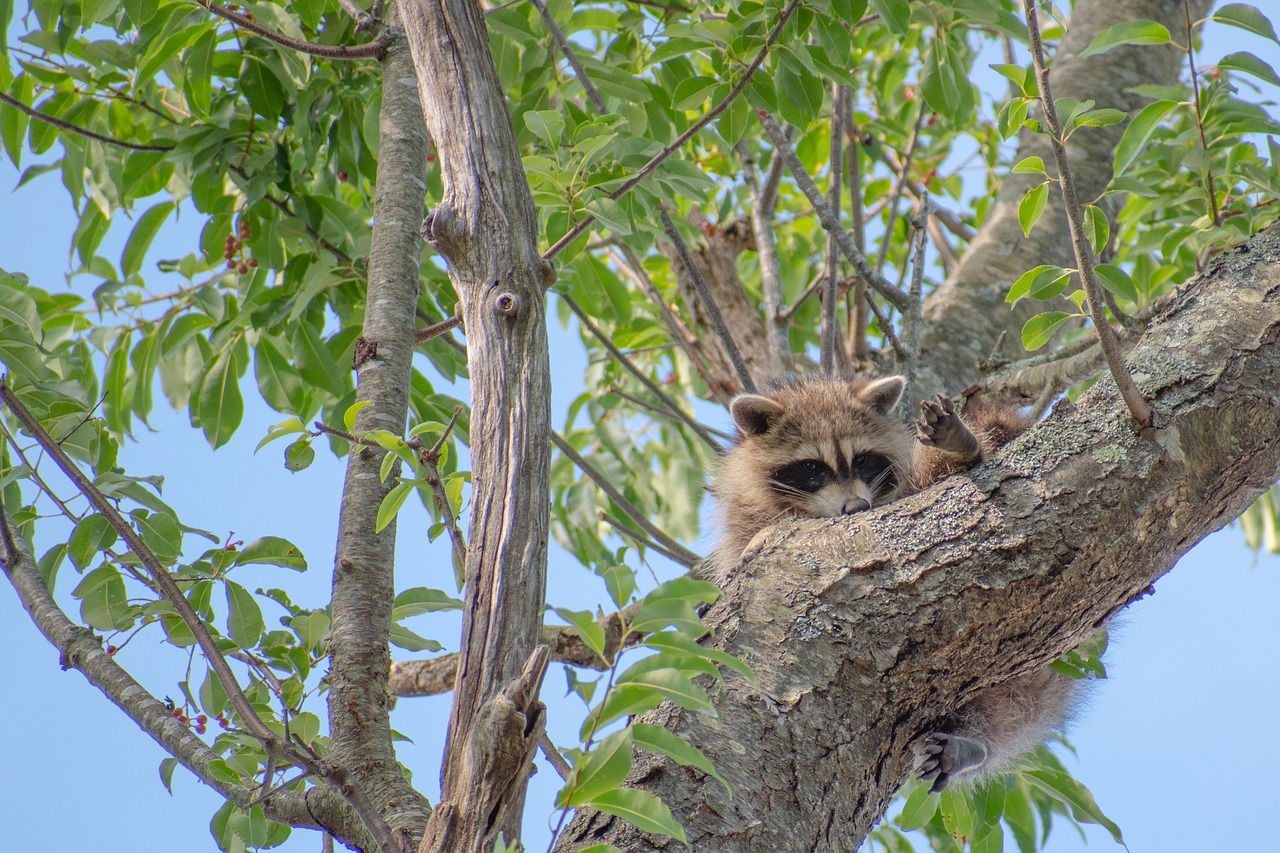Raccoons are clever and adaptable creatures that can become a nuisance when they invade your attic. This article serves as a comprehensive guide for homeowners looking to effectively remove raccoons from their attics. We will explore key prevention strategies, humane removal methods, and the importance of seeking professional assistance when necessary.
Understanding the reasons why raccoons invade attics is crucial for prevention. Common attractants include:
- Food Sources: Raccoons are opportunistic feeders. Leftover pet food, birdseed, or garbage can draw them in.
- Shelter: Attics provide a warm and safe environment for raccoons, especially during colder months.
- Easy Access Points: Unsealed vents, gaps in roofing, or damaged eaves can serve as entry points.
Early identification of a raccoon infestation can prevent extensive damage. Look for the following signs:
- Droppings: Raccoon feces are larger than those of domestic pets and often contain remnants of their diet.
- Claw Marks: Scratches near entry points or on attic surfaces indicate their presence.
- Nocturnal Noises: Sounds of rustling or chattering during the night can signal raccoon activity.
There are several effective methods for removing raccoons from your attic:
- Humane Trapping: Using live traps allows for the safe capture and relocation of raccoons.
- Exclusion Techniques: Sealing entry points after removal ensures that raccoons do not return.
In some situations, it is advisable to call wildlife control professionals. They possess the expertise and tools necessary to handle larger infestations or complex removal situations safely. Consider professional help when:
- The infestation is extensive.
- Raccoons are causing significant damage to your property.
- You are unsure of how to handle the situation safely.
While DIY methods may seem cost-effective, they can pose several risks:
- Injury: Raccoons can be aggressive when cornered, leading to potential injuries.
- Legal Issues: Handling wildlife can be subject to local laws and regulations.
Once raccoons are removed, repairing any damage is essential. This includes:
- Sealing Entry Points: Ensure that all potential access points are securely sealed to prevent future infestations.
- Cleaning and Sanitizing: Remove any droppings or nesting materials to eliminate health risks.
- Restoring Insulation: Replace damaged insulation to maintain energy efficiency in your home.
By following these guidelines, homeowners can effectively manage raccoon infestations in their attics. Remember, prevention is key, and when in doubt, do not hesitate to seek professional help.
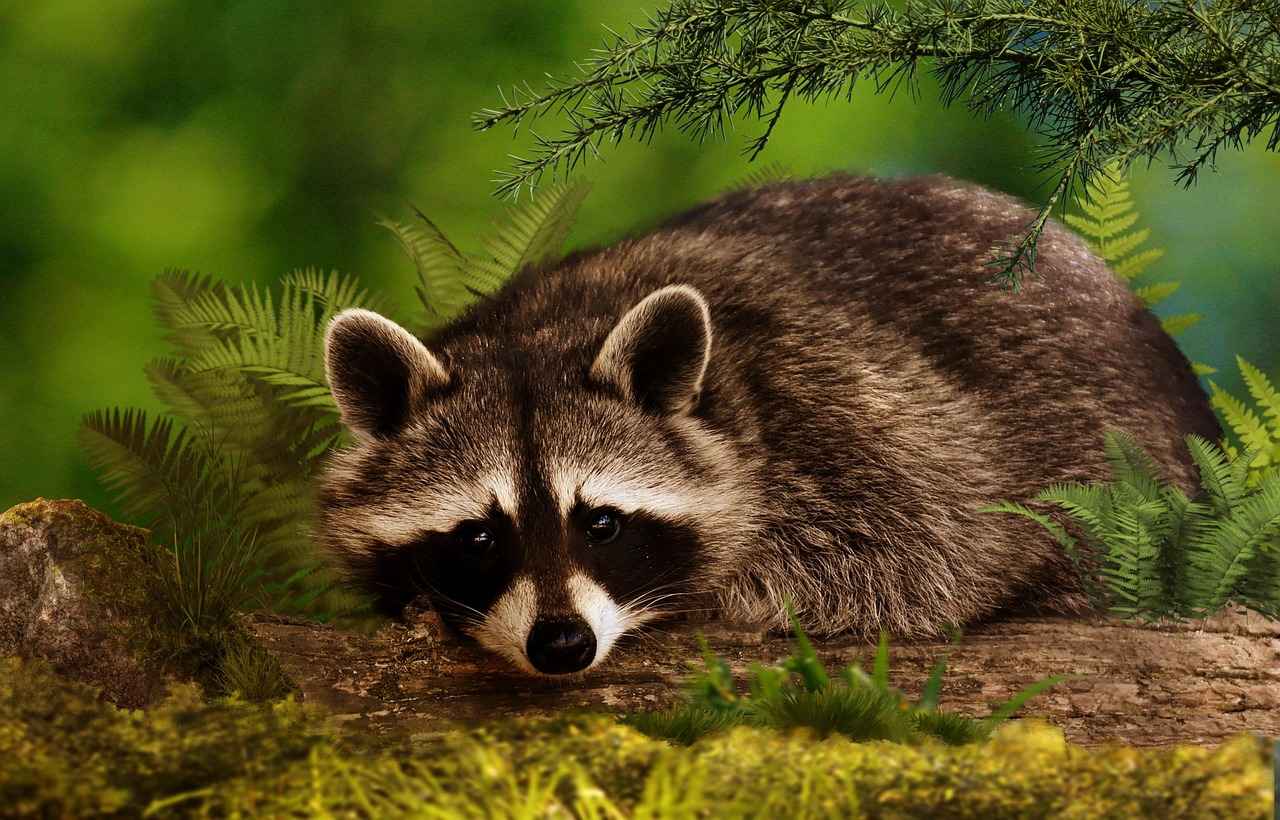
What Attracts Raccoons to Your Attic?
Raccoons are clever and resourceful creatures, often finding their way into attics, where they can cause significant damage. Understanding the reasons why raccoons invade attics is crucial for prevention. By identifying common attractants, homeowners can take proactive steps to secure their homes.
Raccoons are naturally drawn to environments that offer food sources, shelter, and easy access points. Here are some of the primary reasons why these animals may choose your attic as their next home:
- Food Sources: Raccoons are opportunistic feeders. If you leave pet food outside, unsecured garbage cans, or bird feeders overflowing with seeds, you may inadvertently attract these critters. They are particularly fond of sweet and fatty foods, which can be found in many household waste items.
- Shelter: Attics offer a safe haven for raccoons, providing warmth and protection from predators. The dark, secluded spaces are ideal for nesting and raising young. If your attic has easy access points, such as gaps in the roof or vents, it becomes an attractive shelter for these animals.
- Easy Access Points: Raccoons are skilled climbers and can squeeze through surprisingly small openings. Homeowners often overlook potential entry points, such as loose shingles, broken vents, or gaps around chimneys. Ensuring your home is properly sealed can prevent raccoons from gaining entry.
It’s essential to recognize that raccoons are nocturnal creatures, meaning they are most active at night. If you hear noises in your attic during the night, it’s a strong indication that raccoons may have taken up residence.
Additionally, raccoons are known for their intelligence and adaptability. They can easily learn to navigate urban environments, making them more likely to invade homes in search of food and shelter. Their dexterity allows them to manipulate latches and open containers, further increasing their chances of finding a meal.
To minimize the risk of attracting raccoons, homeowners should take a few proactive measures:
- Secure Garbage: Use raccoon-proof trash cans and ensure that all garbage is tightly sealed.
- Remove Pet Food: Bring pet food indoors at night and avoid leaving it outside.
- Inspect Your Home: Regularly check for and repair any gaps or holes in your roof, vents, and foundation.
- Trim Trees: Keep tree branches trimmed back from your roof, as these can serve as convenient pathways for raccoons.
By understanding what attracts raccoons to your attic, you can take effective steps to prevent them from invading your home. Being vigilant and proactive will not only protect your property but also ensure that these fascinating creatures remain safely in their natural habitats.
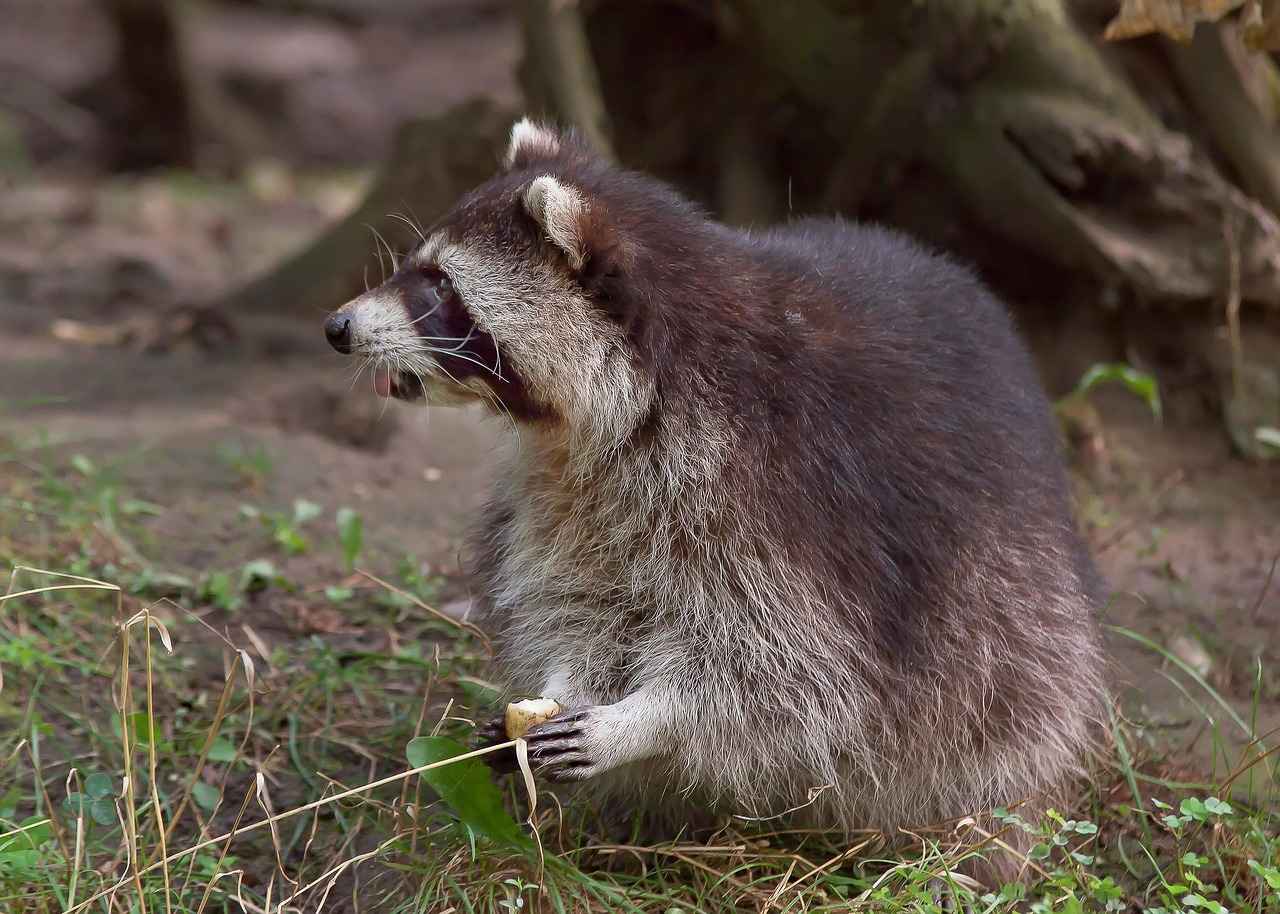
How to Identify Raccoon Infestation
Identifying a raccoon infestation in your attic is crucial for maintaining the integrity of your home. Early detection can save you from costly repairs and extensive damage. Raccoons are notorious for their ability to cause havoc in residential spaces, especially attics where they can find warmth and shelter. Understanding the signs of their presence is essential for any homeowner.
When trying to determine whether raccoons have made your attic their home, look for the following signs:
- Droppings: Raccoon droppings are typically cylindrical and can be found near entry points or nesting areas. They often contain undigested food, such as seeds and fruit.
- Claw Marks: Check for scratch marks on rafters, walls, or insulation. These marks can indicate that raccoons have been climbing around in your attic.
- Nocturnal Noises: Listen for sounds during the night, such as scurrying, scratching, or chattering. Raccoons are primarily active at night, so these sounds can be a clear indication of their presence.
- Entry Points: Inspect your home for any holes or gaps, particularly around vents, chimneys, and eaves. Raccoons can squeeze through surprisingly small openings.
- Nesting Materials: Look for shredded insulation, paper, or fabric that may have been used to create a nest. This material can often be found in secluded areas of your attic.
Identifying a raccoon infestation early is vital for several reasons:
- Preventing Structural Damage: Raccoons can tear up insulation, chew through wires, and damage wooden structures, leading to expensive repairs.
- Avoiding Health Risks: Raccoons are known carriers of diseases such as rabies and raccoon roundworm. Their droppings can also contain harmful parasites.
- Minimizing Stress: The longer raccoons remain in your home, the more stressed you may become. Early intervention can alleviate this anxiety.
If you notice any of the aforementioned signs, it’s essential to take immediate action:
- Inspect Your Attic: Conduct a thorough inspection of your attic. Look for droppings, claw marks, and any signs of nesting.
- Seal Entry Points: Once you have identified potential entry points, seal them off to prevent further access. Use sturdy materials like metal mesh or hardware cloth.
- Consider Professional Help: If you’re unsure about handling the situation yourself, it may be wise to contact a wildlife control expert. They can assess the situation and provide safe removal options.
By being vigilant and proactive, you can effectively identify and address a raccoon infestation before it escalates. Remember, the sooner you act, the better your chances of protecting your home from these persistent pests.
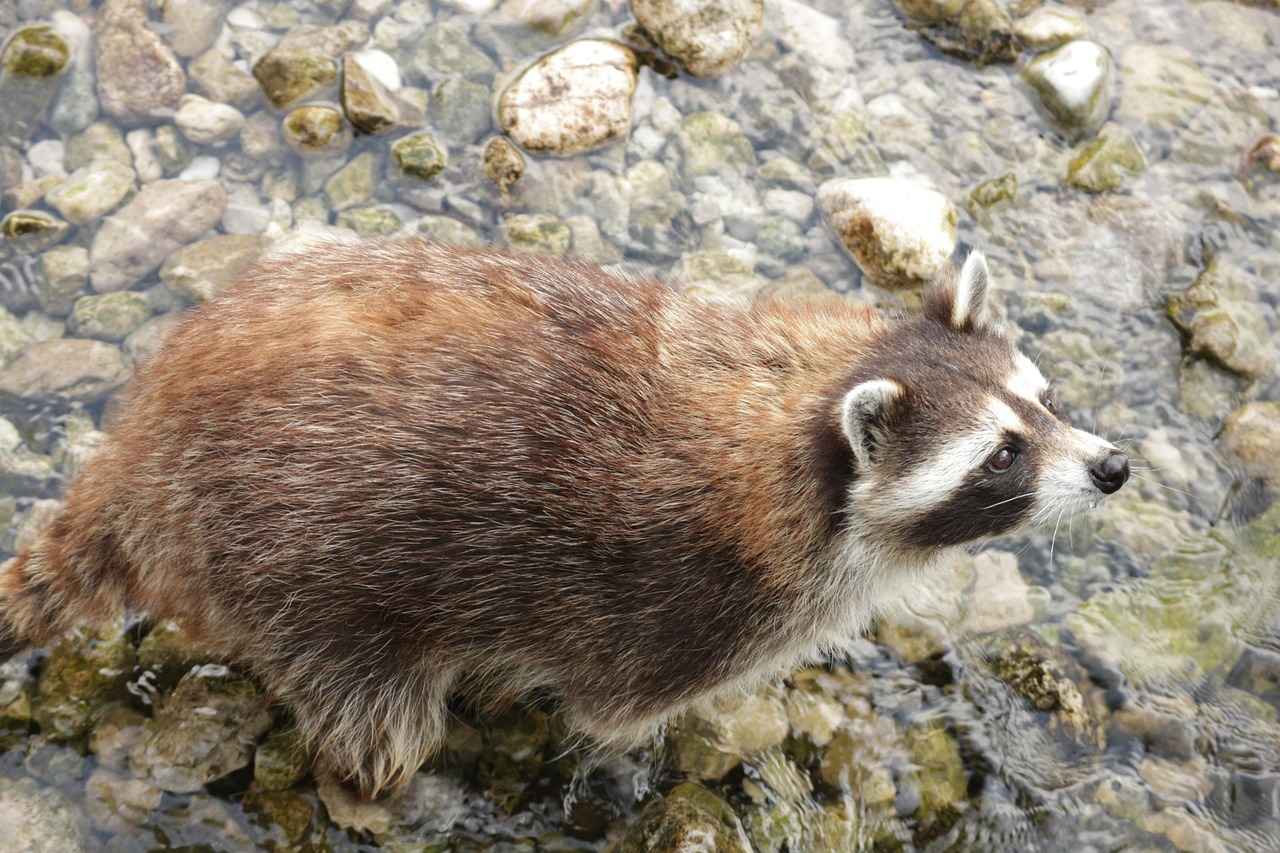
What Are the Best Methods for Raccoon Removal?
When dealing with a raccoon infestation in your attic, it is crucial to understand the most effective methods for removal. Raccoons are intelligent and adaptable creatures, making their removal a complex task. Below, we explore various techniques that homeowners can use to safely and humanely remove these animals from their living spaces.
There are several methods for removing raccoons from your attic. These methods range from humane traps to exclusion techniques that ensure they do not return after removal. Each method has its own advantages and considerations, making it essential to choose the right one for your situation.
- Humane Trapping: One of the most popular methods for raccoon removal is the use of humane traps. These traps are designed to capture the animal without causing harm. Once captured, raccoons can be relocated to a suitable environment, away from residential areas. It’s important to check local regulations regarding trapping and relocation, as some areas may have specific laws.
- Exclusion Techniques: After successfully removing raccoons, implementing exclusion techniques is vital to prevent their return. This involves sealing any potential entry points, such as gaps in the roof, vents, or holes in the walls. Additionally, removing food sources like pet food or unsecured trash can deter raccoons from coming back.
- Noise and Deterrents: Sometimes, raccoons can be discouraged by noise or unpleasant smells. Using motion-activated devices that emit sounds or lights can help to scare them away. Additionally, certain natural repellents can be sprayed around entry points to make the area less appealing.
- Professional Wildlife Control: In cases of severe infestation or if you feel uncomfortable handling the situation yourself, it is advisable to call in professional wildlife control services. These experts have the necessary tools and experience to safely and effectively remove raccoons from your attic.
It is essential to approach raccoon removal with care and consideration for the animal’s welfare. Humane methods not only ensure the safety of the raccoons but also protect you from potential legal issues related to wildlife handling.
In summary, the best methods for raccoon removal include humane trapping, exclusion techniques, noise deterrents, and professional help. Understanding these options will equip homeowners with the knowledge needed to address raccoon infestations effectively and humanely.
Humane Trapping Techniques
When dealing with raccoons in your attic, it is essential to approach the situation with care and consideration for both your home and the wildlife involved. One of the most effective and humane methods for removing raccoons is through the use of humane traps. These traps are designed to capture the animal without causing harm, allowing for safe relocation. This method not only minimizes stress for the raccoon but also complies with local wildlife regulations.
Humane trapping is increasingly recognized as a responsible approach to wildlife management. By choosing this method, you ensure that the raccoon is not harmed during the capture process. Using humane traps can also prevent potential legal issues associated with inhumane treatment of wildlife. Additionally, these traps allow for the animal to be relocated to a suitable habitat where it can thrive without posing a threat to human dwellings.
Humane traps are typically designed to lure raccoons using bait, such as fruits, nuts, or pet food. Once the raccoon enters the trap, a mechanism closes the door, securing the animal inside without injury. It’s crucial to check the traps frequently to ensure that the animal is not left inside for extended periods, which can cause stress and harm.
- Location: Place traps in areas where raccoons are frequently seen or where signs of their presence, such as droppings or claw marks, are evident.
- Bait: Use enticing bait to lure the raccoon into the trap. Foods like marshmallows, peanut butter, or canned tuna can be effective.
- Monitoring: Check the traps at least once every few hours to ensure the animal is not in distress.
- Release: Relocate the trapped raccoon to a suitable area, away from residential neighborhoods, following local wildlife regulations.
Before setting humane traps, it is vital to familiarize yourself with local laws regarding wildlife capture and relocation. Some regions may require permits or have specific guidelines on where raccoons can be released. Always ensure that you are acting within the law to avoid potential fines or legal issues.
While humane trapping can be effective, there are instances where professional assistance may be necessary. If the raccoon population is large or if you are uncomfortable handling the situation, contacting a wildlife control expert can provide peace of mind. Professionals have the experience and tools to handle raccoons safely and humanely.
In conclusion, humane trapping is an effective and ethical method for removing raccoons from your attic. By understanding how these traps work and following best practices, you can ensure a safe and stress-free relocation for the animal while protecting your home from damage. Always consider local regulations and don’t hesitate to seek professional help when needed.
Exclusion Methods to Prevent Return
After successfully removing raccoons from your attic, the next crucial step is to implement exclusion methods to prevent future infestations. Raccoons are intelligent creatures that can easily find their way back if appropriate measures are not taken. Here are some effective strategies to ensure they stay away for good.
- Seal Entry Points: Inspect your home thoroughly for any potential entry points. Raccoons can squeeze through surprisingly small openings. Common areas to check include:
- Gaps around vents and chimneys
- Holes in the roof or eaves
- Cracks in the foundation
- Spaces around utility lines
- Remove Attractants: Raccoons are drawn to food sources and shelter. To deter them, take the following actions:
- Store trash in sealed containers and keep them in a garage or shed.
- Remove pet food and birdseed from outside, especially at night.
- Clean up fallen fruits or nuts from trees in your yard.
- Keep compost bins secure and avoid adding meat or dairy products.
- Install Raccoon-Proof Barriers: Consider installing barriers to make your home less accessible. This can include:
- Installing raccoon-proof caps on chimneys and vents.
- Putting up fencing around gardens and yards, ensuring it is buried a foot underground to prevent digging.
- Using motion-activated lights or sprinklers to scare them away.
- Regular Maintenance: Keep your property well-maintained to reduce the likelihood of attracting raccoons. Regularly check your roof and gutters for debris that could provide shelter or nesting materials.
Use materials such as metal flashing, hardware cloth, or caulk to seal these openings securely.
By taking these proactive measures, you can significantly reduce the chances of raccoons returning to your attic. Remember that the key to effective exclusion is consistency. Regularly monitor your home and yard for new entry points or attractants, and address any issues immediately.
In addition to these methods, consider consulting with a wildlife control professional for a comprehensive assessment of your property. They can provide tailored advice and solutions to ensure your home remains raccoon-free. Implementing these exclusion methods not only protects your home but also contributes to the well-being of local wildlife by encouraging them to seek natural habitats instead of urban areas.
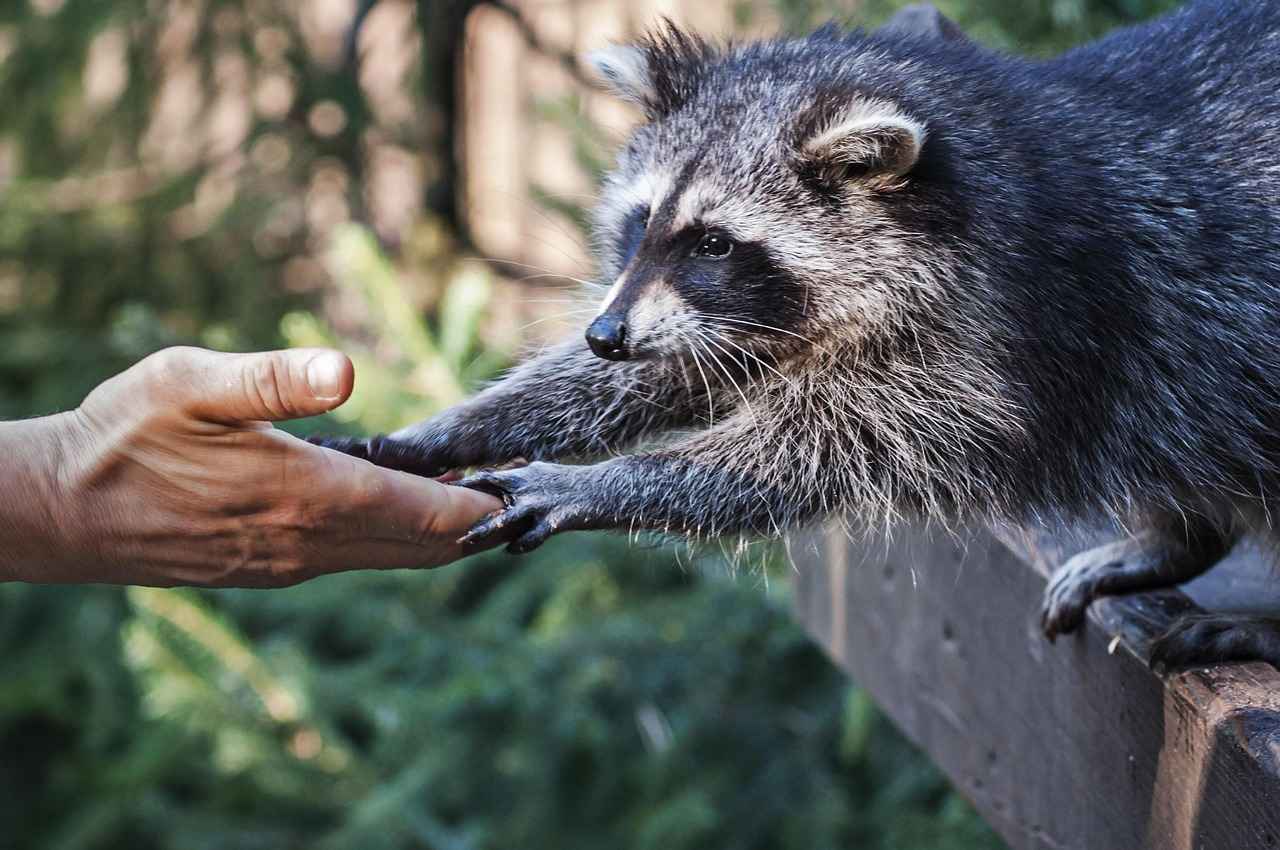
When Should You Call a Professional?
When dealing with raccoons in your attic, it can be a daunting task to determine the best course of action. While some homeowners may consider attempting to remove the animals themselves, there are specific situations where calling in wildlife control professionals is the most prudent choice. Understanding when to seek expert help can save you time, money, and potential hazards.
Wildlife control professionals possess specialized knowledge and tools that enable them to handle raccoon infestations effectively and safely. Here are several reasons why relying on their expertise is beneficial:
- Experience: Professionals have extensive experience dealing with various wildlife issues, allowing them to quickly assess the situation and implement appropriate solutions.
- Safety: Raccoons can be unpredictable and may carry diseases such as rabies. Experts are trained to manage these risks, ensuring the safety of both the animals and your family.
- Humane Practices: Professionals utilize humane trapping and relocation methods, adhering to local wildlife laws and promoting ethical treatment of animals.
- Comprehensive Solutions: They can identify and address underlying issues, such as entry points and attractants, to prevent future infestations.
Recognizing when to involve a professional can be crucial in managing a raccoon issue. Consider these signs:
- Large Infestations: If you notice multiple raccoons or signs of extensive damage, it’s time to call in the experts.
- Difficulty in Removal: If you’ve tried DIY methods without success, professionals have the tools and techniques to handle complex situations.
- Health Concerns: If there are health risks involved, such as potential disease transmission, it’s safer to let professionals handle the situation.
- Structural Damage: If raccoons have caused significant damage to your attic or home, experts can provide repair solutions alongside removal.
When you decide to call a wildlife control professional, you can expect a thorough process:
- Inspection: They will conduct a comprehensive inspection of your property to identify entry points and assess the extent of the infestation.
- Humane Removal: Using humane traps, they will safely remove the raccoons from your attic.
- Exclusion Techniques: After removal, they will implement exclusion methods to seal entry points and prevent future access.
- Damage Repair: Many professionals also offer repair services to fix any damage caused by the raccoons.
While hiring wildlife control services involves a cost, it can be a worthwhile investment. The price may vary based on factors such as:
- Extent of Infestation: Larger infestations may require more resources and time, leading to higher costs.
- Location: Prices may vary depending on your geographic area and the availability of services.
- Additional Repairs: If damage repair is needed, this will add to the overall expense.
Ultimately, the cost of professional services can be significantly less than the potential damages and health risks associated with a raccoon infestation.
In summary, while some homeowners may be tempted to handle raccoon removal on their own, it’s essential to recognize when professional help is necessary. The expertise and resources that wildlife control professionals bring to the table can ensure a safe, effective, and humane resolution to your raccoon problem.
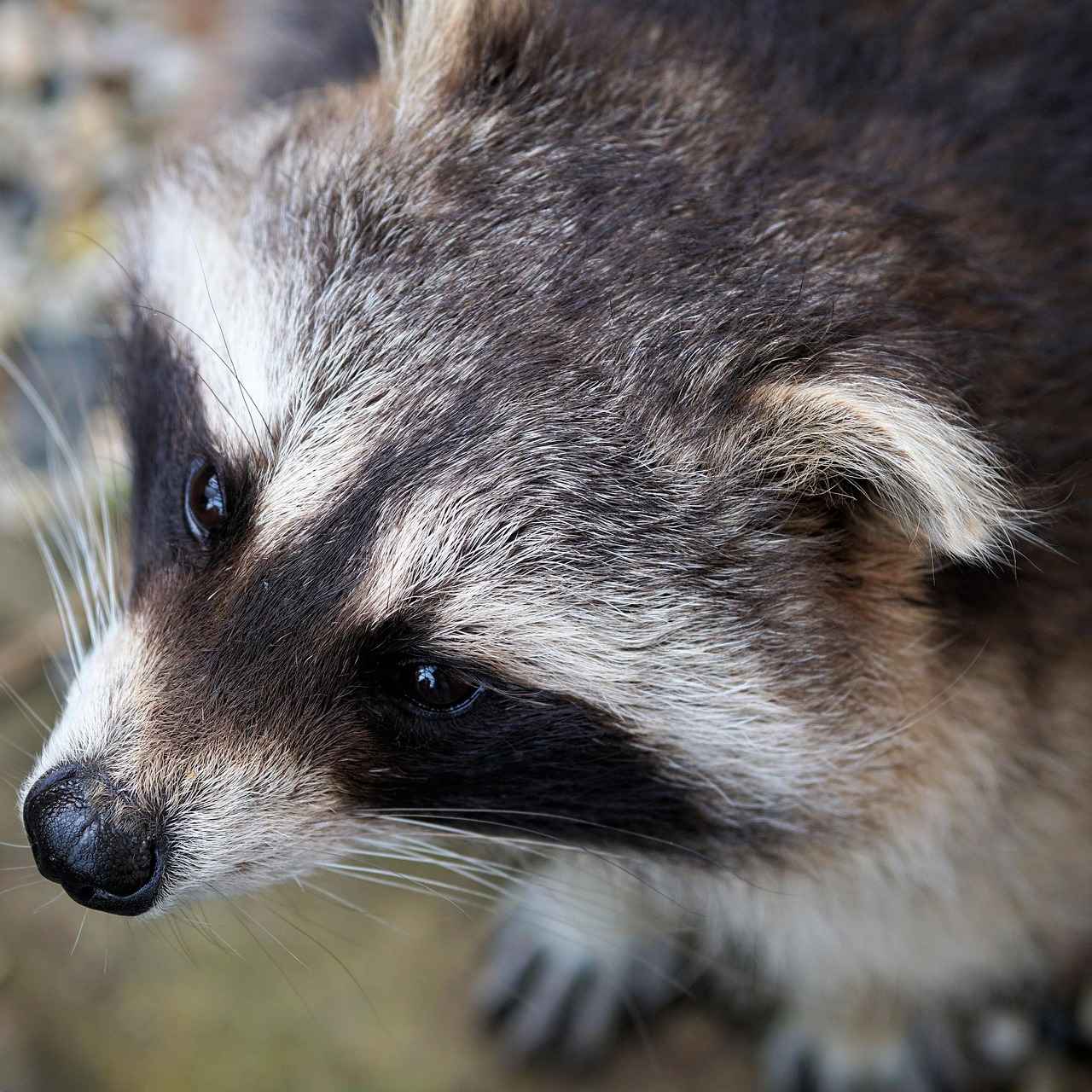
What Are the Risks of DIY Raccoon Removal?
When it comes to dealing with raccoons in your attic, many homeowners consider DIY removal methods as a quick and cost-effective solution. However, it is essential to understand the potential risks associated with these approaches. Ignoring these dangers can lead to serious consequences, both for you and the wildlife involved.
One of the most significant risks of attempting to remove raccoons on your own is the potential for injury. Raccoons are wild animals, and when they feel threatened, they can become aggressive. They possess sharp claws and teeth that can inflict serious wounds. Homeowners who try to handle raccoons without proper training or equipment may find themselves in dangerous situations, leading to painful bites or scratches. Additionally, raccoons can carry diseases such as rabies, which poses a severe health risk to humans.
Another concern is the legal implications surrounding wildlife handling. Many regions have strict laws and regulations regarding the removal of wild animals, including raccoons. In some areas, it is illegal to trap or relocate raccoons without a permit. Homeowners who choose to ignore these laws may face fines or other legal repercussions. It is crucial to research local wildlife regulations before attempting any DIY removal methods.
Furthermore, DIY methods often lack the effectiveness of professional approaches. Homeowners may inadvertently cause more harm than good by using traps or poisons that can lead to suffering or death for the animals. Improper removal can also result in additional issues, such as leaving behind orphaned baby raccoons, which can lead to further complications for both the animals and the homeowners.
In addition to physical and legal risks, there are also financial considerations. While DIY methods may seem cheaper initially, the potential costs associated with injuries, legal fines, or ineffective removal can add up quickly. Hiring professionals who specialize in wildlife control may incur an upfront cost, but it can save homeowners from unexpected expenses down the line.
Ultimately, while the allure of DIY raccoon removal may be strong, it is crucial to weigh the risks carefully. Homeowners should consider the potential for injury, legal issues, and the effectiveness of their methods before proceeding. In many cases, it is advisable to seek the assistance of wildlife control professionals who possess the expertise and tools necessary to handle raccoon removal safely and humanely.
By understanding the risks associated with DIY raccoon removal, homeowners can make informed decisions that protect both their health and the well-being of the animals involved. It is always better to err on the side of caution and seek expert help when dealing with wildlife.
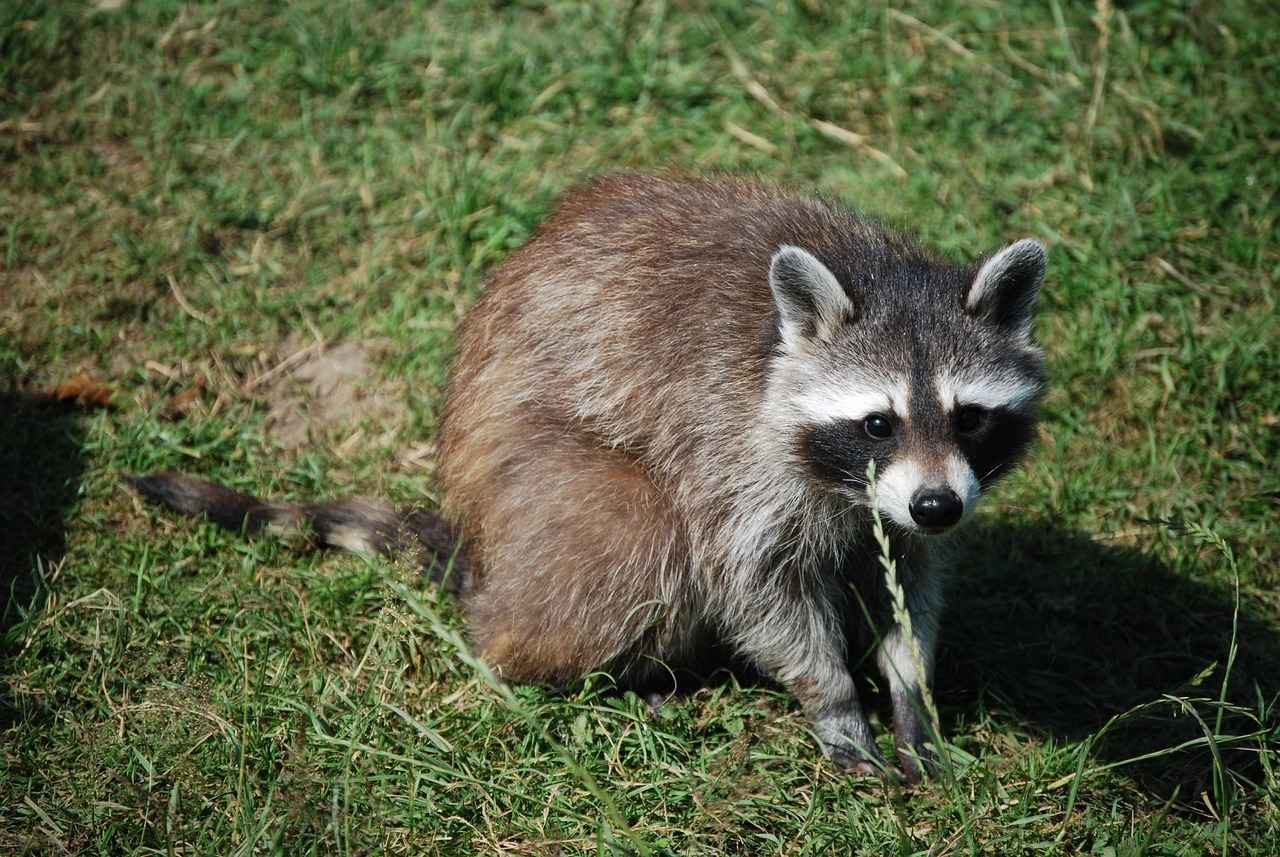
How to Repair Damage After Raccoon Removal?
After successfully removing raccoons from your attic, it is crucial to address any damage they may have caused. Repairing this damage not only helps restore your attic to its original state but also plays a vital role in preventing other pests from entering through the same vulnerabilities. Here’s how to effectively repair damage after raccoon removal:
The first step in the repair process is to thoroughly assess the damage caused by the raccoons. This includes:
- Inspecting insulation: Raccoons often tear up insulation for nesting material, which can reduce your attic’s energy efficiency.
- Checking for holes: Look for entry points that raccoons may have created. These holes can lead to further infestations if not sealed properly.
- Evaluating wiring and ductwork: Raccoons are known to chew on wires and ducts, potentially creating fire hazards or HVAC issues.
Once you have assessed the damage, the next step is to repair insulation and any structural issues. Here’s how:
- Replace damaged insulation: Remove and replace any insulation that has been shredded or contaminated with raccoon droppings, which can pose health risks.
- Seal entry points: Use durable materials like metal mesh or caulk to seal up holes and prevent future wildlife from entering.
- Fix structural damage: Repair any wood or structural elements that have been compromised. This may involve replacing beams or panels that are rotting or damaged.
After repairs, it’s essential to clean and sanitize the affected areas. Raccoon droppings and urine can carry diseases, so proper cleaning is critical:
- Wear protective gear: Always wear gloves, a mask, and goggles when cleaning to avoid exposure to harmful pathogens.
- Use appropriate cleaning solutions: Utilize a mixture of water and a disinfectant to clean surfaces. Enzyme-based cleaners can effectively break down organic waste.
- Dispose of waste properly: Seal droppings and contaminated materials in plastic bags before disposal to prevent any lingering odors or health hazards.
To ensure that your attic remains a safe and pest-free environment, consider implementing preventive measures:
- Trim trees and shrubs: Keep branches trimmed away from your roof to minimize access points for raccoons and other wildlife.
- Secure trash bins: Ensure that all garbage is stored in raccoon-proof containers to eliminate food sources.
- Install raccoon-proof barriers: Consider installing barriers or screens over vents and chimneys to prevent raccoons from gaining access.
In summary, repairing damage after raccoon removal is a multi-step process that involves assessing the damage, making repairs, cleaning the area, and implementing preventive measures. By taking these steps, you not only restore your attic but also create a less inviting environment for future pests.
Frequently Asked Questions
- What attracts raccoons to my attic?
Raccoons are drawn to attics for a few reasons: the promise of food, a cozy shelter, and often, an easy way in. If you leave pet food outside or have garbage that isn’t securely stored, you’re basically rolling out the welcome mat!
- How can I tell if I have a raccoon infestation?
Look out for signs like droppings, claw marks, and those unmistakable nighttime noises. If you hear scratching or rustling, it’s time to investigate further. Think of it like a detective story—follow the clues!
- Are humane traps effective for raccoon removal?
Absolutely! Humane traps are a great way to catch raccoons without causing them harm. It’s like giving them a one-way ticket to a new home where they can roam free, all while keeping your attic safe!
- When should I call a professional for raccoon removal?
If the infestation is large or you feel uncomfortable handling it yourself, calling in the pros is the best bet. They have the tools and expertise to tackle the situation safely—think of them as the superheroes of wildlife control!
- What are the risks of trying to remove raccoons myself?
DIY raccoon removal can be risky. You might get injured or run into legal issues if you’re not familiar with local wildlife laws. It’s like trying to fix a car without knowing how—sometimes, it’s just better to call in an expert!

